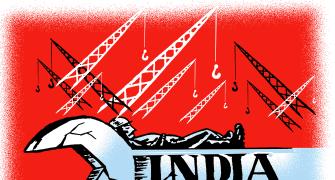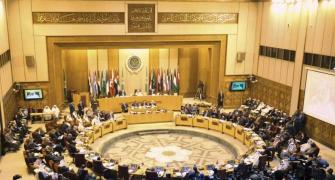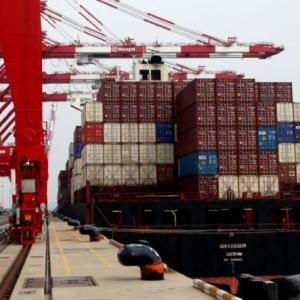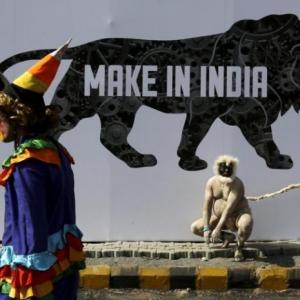Foreign Trade Policy: More incentives for exports, focus on ease of trading

Commerce Minister Suresh Prabhu on Tuesday unveiled more incentives to boost labour-intensive and employment-oriented merchandise and services exports while releasing the much-awaited mid-term review of the Foreign Trade Policy 2015-20.
The annual incentive increased by 33.8 per cent or Rs 8,450 crore.
This financial year (FY18), it will be an additional incentive of Rs 2,816 crore.
This will benefit leather, handicraft, carpets, sports goods, agriculture, marine, electronic components, and project exports in merchandise, and legal, accounting, architecture, and education in services.
Exporters demanded the incentives be extended to other products as well since they were facing challenging times because of demonetisation last year and the goods and services tax (GST) roll-out this year.
The policy, however, cautioned exporters that the current WTO rules as well as those under negotiation envisage the eventual phasing out of export subsidies.
“This is a pointer to the direction that export promotion efforts will have to take in future, i.e. towards more fundamental systemic measures rather than incentives and subsidies alone,” it said.
The government assured exporters that it would release their blocked funds expeditiously, but advised them to file forms correctly, as many were filing for more input credit than taxes paid.
It, however, disputed the claim that Rs 50,000 crore of exporters’ money was stuck in yet-to-be-cleared GST refunds.
The policy also did not say much on achieving the target of $900-billion exports by 2020.
There were speculations that the target would be truncated.
Merchandise exports touched $170.29 billion in the first seven months and services exports $80.33 billion in the first six months of the current financial year, totaling only $250.62 billion.
The policy focused on exploring new markets and new products, as well as in increasing India’s share in the traditional markets and products.
The commerce department announced an increase in the Merchandise Exports from India Scheme (MEIS) incentives for two sub-sectors of textiles - readymade garments and made-ups - from 2 per cent to 4 per cent.
This translates into an annual incentive of Rs 2,743 crore.
The increase had been announced earlier and was reiterated on Tuesday.
The government has also increased existing MEIS incentives by 2 percentage points for exports of medium and small enterprises. This would be an annual amount of Rs 4,567 crore.
Prabhu said the FTP would provide an “additional annual incentive of Rs 749 crore for the leather sector, Rs 921 crore for handmade carpets of silk, handloom, coir, and jute products, Rs 1,354 crore for agriculture products, Rs 759 crore for marine products, Rs 369 crore for telecom and electronic components, and Rs 193 crore for medical equipment”.
The Services Exports from India Scheme (SEIS) incentives have also been increased by 2 percentage points, amounting to Rs 1,140 crore.
MEIS and SEIS provide incentive in the form of duty credit scrip to the exporter to compensate for his loss on payment of duties.
The incentive is paid as percentage of the realized freight on board value (in free foreign exchange) for notified goods and services going to notified markets.
Prabhu said, There is incentive for all sectors. But the sectors which needed the most support from us are the ones which generate the most employment, the labour-intensive sectors.”
He also said jewelry exports can grow from $7 billion to $20 billion.
The department has also abolished the GST for transfer and sale of these scrips to zero from 12 per cent, increased the validity period for these tradeable papers to 24 months from 18 months.
The round-the-clock customs clearance facility has been extended at 19 sea ports and 17 air cargo complexes.
Through export promotion of capital goods and the 100 per cent EoU scheme, exporters have been extended the benefit of sourcing inputs and capital goods from abroad, as well as domestic suppliers for exports without upfront payment of the GST.
Merchant exporters have been allowed to pay nominal GST of 0.1 per cent for procuring goods from domestic suppliers for exports.
Commerce secretary Rita Teotia said while global trade had begun to pick up, it was emerging market economies that had been witnessing more growth.
“We have to capture these markets,” she said.
The commerce & industry minister said India could partner with other nations, like Japan and South Korea, to tap into markets like Africa.
Teotia said the MEIS covered 8,000 product lines - two-third of the total.
Federation of Indian Export Organisations President Ganesh Kumar Gupta said the MEIS should be extended to other exports, since they were also facing numerous challenges.
He said a one-time relaxation to meet export obligation could be provided to industry, so that they could escape the penal provisions.
Finance secretary Hasmukh Adhia said the GST refunds were being given to exporters expeditiously. However, engineering export body EEPC India Chairman T S Bhasin demanded faster clearance of GST refunds.
Prabhu said, “The finance secretary has assured us that the government will work expeditiously to deal with all the issues which exporters are facing regarding GST.
"There is an issue with refunds. That will be solved soon.”
| Govt simplifies export procedures |
|
In the mid-term review of the foreign trade policy, the government has unveiled several initiatives to improve the ease of doing business. The government has introduced a new scheme that allows duty-free import of inputs for exports production after a self-declaration, as against the earlier exercise of getting a ratification from the norms committee first. This scheme, which will initially be available to authorised economic operators, will help reduce the turnaround time in sectors such as pharmaceuticals, chemicals, textiles, and engineering. “The trust-based self-ratification scheme to procure raw materials duty free with a self-declaration, as against getting the same ratified with the norms committee for inputs to be used in the manufacture of export products, is certainly going to scale up the capacity to cater to the global demand,” said Aditya Singhania, deputy general manager, GST, Taxmann. “This is a strategic step, which will significantly reduce the time taken in getting the clearances from the norms committee for duty-free procurement. With this step, the exporters can self-certify the requirement of duty-free inputs and take authorisation from the DGFT (Directorate General of Foreign Trade),” Singhania said. The government has made the import of second-hand goods for the purpose of repair/re-furbishing/re-engineering free, which it says would facilitate employment generation. To improve the ease of trading, the mid-term policy has envisaged the creation of professional teams to handhold, assist, and support exporters with their problems, accessing export markets, and meeting regulatory requirements. It has also called for reducing the dwell time at inland container depots, ports, and airports through coordination among the customs and infrastructure ministries. A national trade facilitation committee will be set up which would cover issues such as simplification of procedures, infrastructure, and risk-based assessment. The round-the- clock customs clearance facility has been extended to 19 seaports and 17 air cargo complexes. Separately, the CBEC has done away with routine printouts of documents such as GAR 7 forms/TR6 challans, shipping bills, etc. The review calls for the creation of a new logistics division, which will facilitate the integrated development of the logistics sector by suggesting changes in the policy, identification of bottlenecks, and improvement in existing procedures. Further, it states that procedures for applying for IEC are being simplified, while procedures for the export obligation period extension have been simplified as has the procedure for the installation of machinery under the EPCG scheme. Export-oriented units (EOU), and electronic hardware and software technology parks (EHTP, STP) have been allowed to import from bonded warehouses in domestic tariff areas (DTA) without payment of customs duty and integrated tax and GST compensation cess, while inter-unit transfer from one EOU/EHTP/STP to another has been allowed after the payment of duties and taxes. |
Photograph: Amit Dave/Reuters










